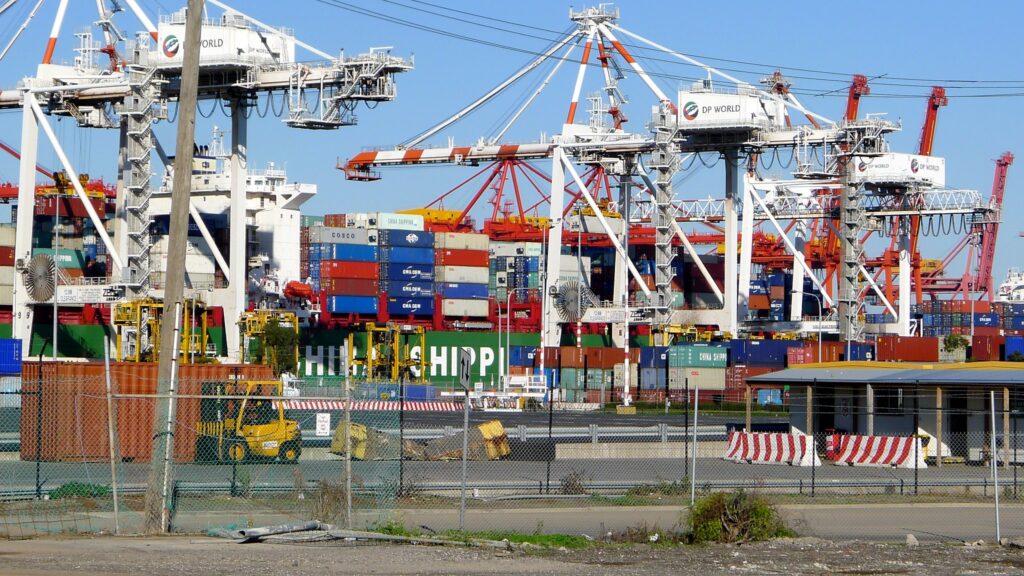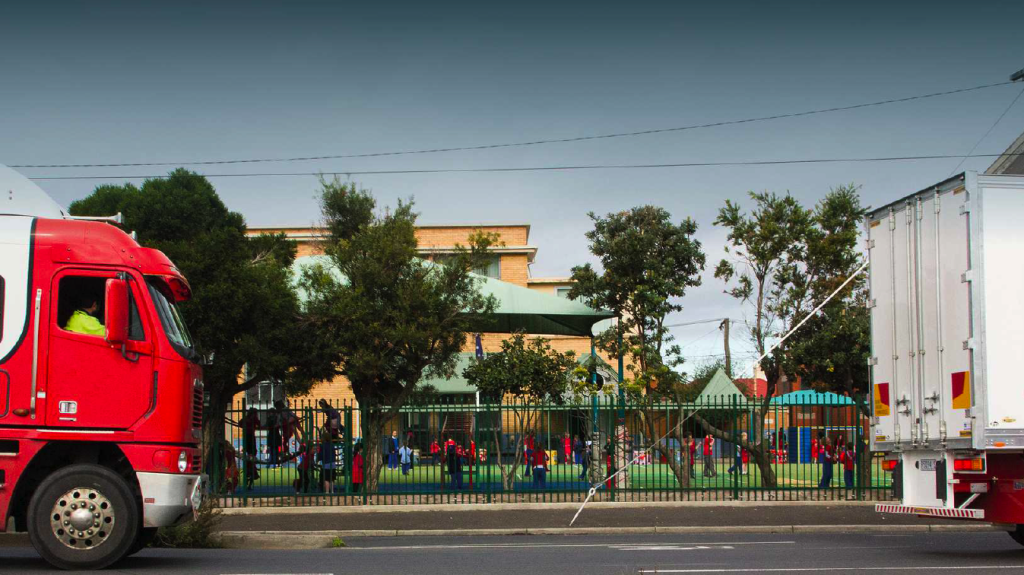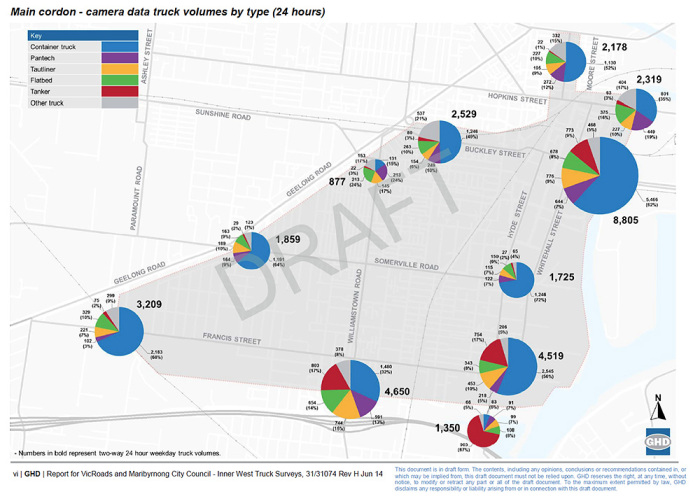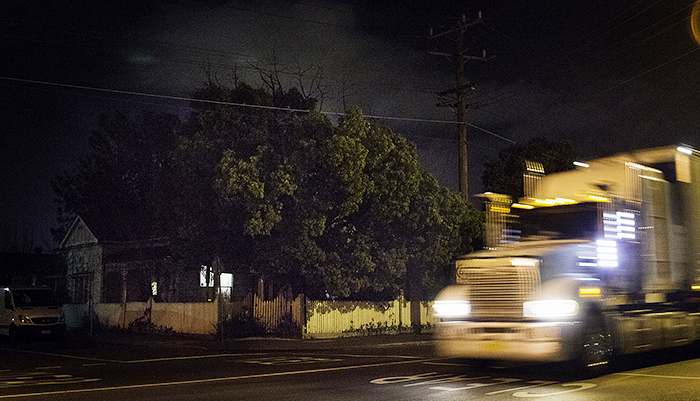The Current Situation
Many communities face transport issues, but ours is making us sick.The City of Maribyrnong is a toxic hotspot in Melbourne, the world’s most liveable city. The problem is trucks: 22,000 of them every day in Melbourne’s inner west. They emit diesel pollution over our houses, our schools, our kindergartens and childcare centres. And they make our streets unsafe for other road users.
The truck problem originates at the Port of Melbourne. The City of Maribyrnong is right next door and slap bang in the middle between the port and distribution warehouses and container yards further to the west. Melbourne’s port is Australia’s largest container terminal.
Every day these trucks use our narrow residential streets that were designed in the 1800’s, long before the trucks. The trucks short cut through the inner west to find shorter routes or to avoid tolls and congestion on the freeways. These short haul trucks are often the oldest and dirtiest trucks on our roads.

What’s the impact of 21,000 trucks every day?
Our community has a justifiable fear of air pollution. The World Health Organisation now describes diesel exhaust as a carcinogen. It causes respiratory problems and asthma, and can inhibit early childhood lung development. It also contributes to heart disease and obesity.
You can see the pollution everywhere, on our homes, footpaths, shop windows, but it’s what we can’t see: the ultrafine particles which are causing the greatest concern.
Noise is also a huge issue for residents along the roads used by trucks. The noise they generate is way above the VicRoads standards for freeways, and can lead to broken sleep and a range of health issues, including heart disease, mental illness and a shortened life span.
The community is also understandably concerned about the safety risks for road users – such as pedestrians, cyclists, drivers – who are sharing 19th century roads with massive trucks. And recent proposals to allow even bigger trucks on streets through Maribyrnong has escalated these concerns.
But the problems are not only felt by the community. Trucks drivers do not like having to share roads with pedestrians and cyclists, they don’t want to deal with parked and reversing cars, or traffic lights and pedestrian crossing. And truck drivers don’t like being the target of community outrage and negative media stories.
Curfews, congestion and missing road links restrict freight movements and increase travel times. This has an impact on productivity. With container numbers expected to double in 10 years, it is going to be hard for Melbourne Port to remain world class, and with a growing population in the west, Melbourne’s liveability is being severely impacted.

Curfews
The community fought hard and won night-time and weekend curfews for some parts of the inner west. The curfews currently in place are:
Francis Street, Yarraville
8pm-6am Monday to Friday
8am – 9.30am and 2.30pm – 4pm school days (west of Williamstown Rd only)
1pm Saturday to 6am Monday
Somerville Road, Yarraville
8pm-6am Monday to Friday
8am – 9.30am and 2.30pm – 4pm school days
1pm Saturday to 6am Monday
Moore St, Footscray
8pm-6am Monday to Friday
1pm Saturday to 6am Monday
This curfew has an exemption for drivers accessing the Tottenham/Brooklyn container yards.
The formation of some of these curfews came out of a partnership comprising of Maribyrnong City Council, VicRoads, the EPA and the Department of Health in late 2013. This group was prompted by MTAG and community lobbying with the final straw being the EPA monitoring of diesel pollution on Francis Street in 2012-2013. The final analysis showed that Francis Street is Australia’s most polluted residential street. It’s a toxic hotspot as ranked by Environmental Justice Australia in their “Clearing the Air” report in 2014.
The “Trucks in the Inner West” working group focussed on short-term measures which would lessen the impact of truck traffic on residents while we wait for infrastructure solutions. A Truck Movement Survey was undertaken to identify and track truck movements in, and through, the inner west. The report demonstrated that more than 55% of the truck traffic in the inner West is through traffic with no reason to be in the local area – no surprises there!

The new curfews resulting from this group were very much welcomed by MTAG but they will not fix the problem – there’s no silver bullet without infrastructure. And curfews on one residential street will often push truck traffic onto others. Despite VicRoads promising us that these curfews were “just the start” the partnership has not achieved anything significant since 2014.
In February 2016 Roads Minister Luke Donnellan told us the partnership would look at night and weekend curfews for Buckley Street and Williamstown Road but this has never happened.

To see what nights were like for Moore Street residents watch here
To see how school children were impacted by the trucks on Somerville Road watch here
